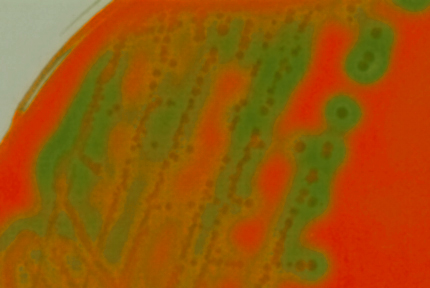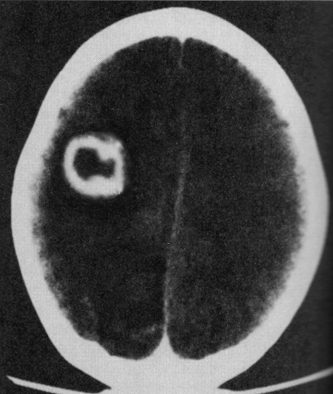Viridans Streptococci
CASE 1
• A 43 year old has had fever and night sweats for the past 2 months. Three months ago, he had an abscessed tooth extracted without immediate complications. He has a long-standing history of rheumatic heart disease affecting the mitral valve, and his doctor has been aware of a murmur of stenosis (narrowing of the valve orifice) for many years. Reexamination of the patient at the time of presentation revealed that he had no developed an additional murmur of mitral regurgitation.
• A chest x-ray is taken to rule out tuberculosis, but the lungs are completely normal. Blood cultures are obtained on three consecutive days, and all three grow alpha-hemolytic streptococci (image below shows colonies growing on blood agar).

Questions:
1. What was the source of the alpha-streptococci in the blood?
2. How was the patient's heart valve infected?
3. In what other anatomical sites would you expect to find viridans streptococci?
4. Are these bacteria virulent? Can they cause disease in any host at any time?
5. How can distinguish ordinary viridans streptococci in culture from pneumococci, which are also alpha-hemolytic?
CASE 2
• A 54 year old man has a 3 week history of increasing left-sided headache and low-grade fever. During the past few days, he has noticed increasing weakness in his right hand. On the day of admission, he is confused about his whereabouts and the time of day. The patient has a history of chronic sinusitis, and he has received 3 courses of antibiotics for this problem during the past year.
• A CT scan of the brain with contrast is shown. A neurosurgeon is called to aspirate the obvious lesion. The Gram stain shows Gram-positive cocci in chains and pairs. The routine culture grows Streptococcus angiosus (from the S. milleri group). A dedicated anaerobic culture also grows an unspecified anaerobic coccus. The patient is treated with ceftriaxone and metronidazole and recovers full function over the next 2 months.

Questions:
1. From where did the organisms found in the patient's brain abscess arise?
2. In which other organs of the body are abscesses with alpha-streptococci found?
3. Which subgroups of alpha-streptococci are likely to be involved in polymicrobial abscesses? Which cause tooth decay? Which are likely to be involved in oral infections (e.g., dental abscesses)
4. Are you surprised to find an anaerobic organism in this abscess? Where did it come from?